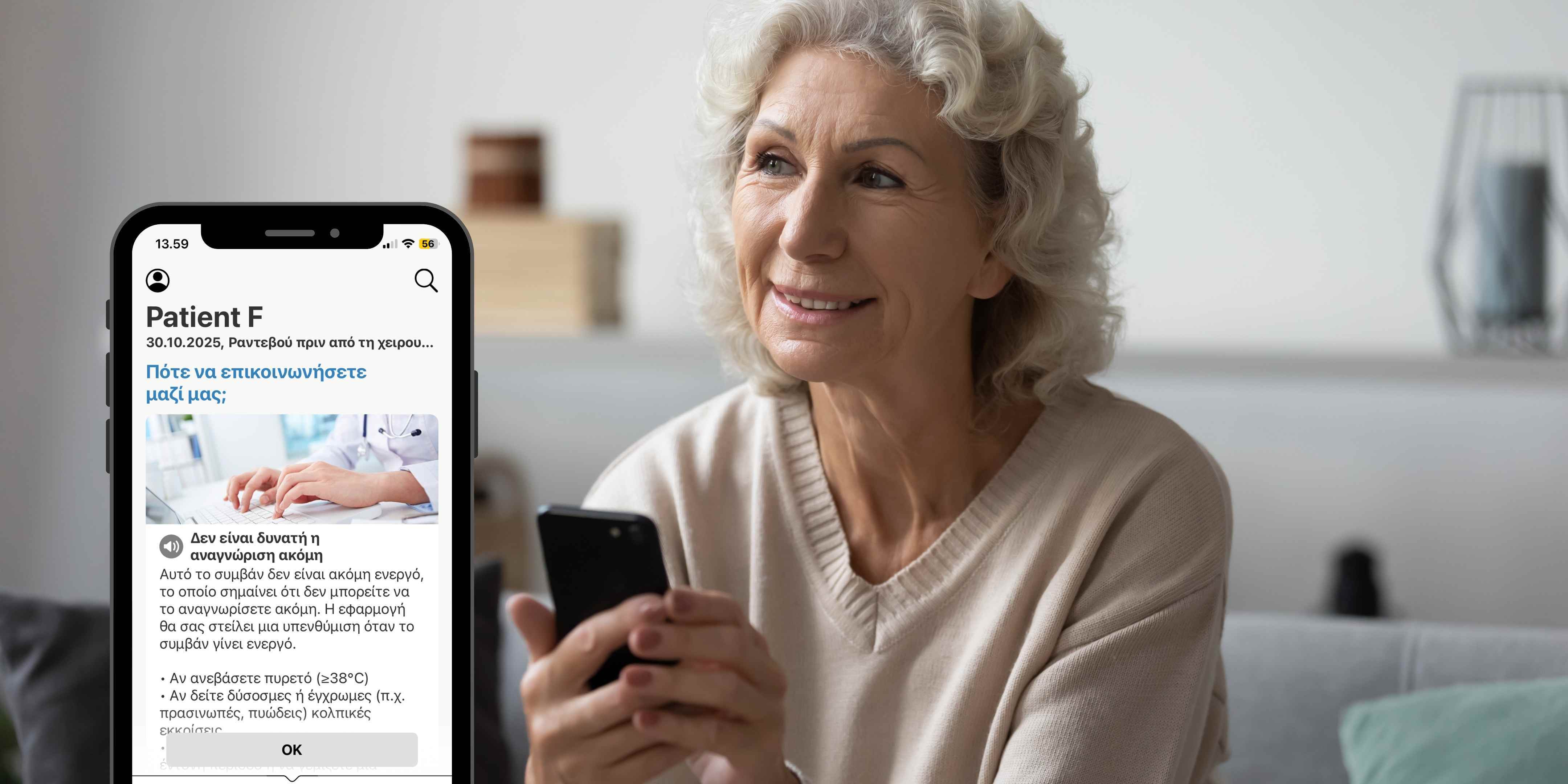Digitalisation in hospitals and health systems: What is offered to the patient?
The digital transformation of healthcare has progressed rapidly, with an increasing focus on patients' needs. Digital care pathways offer the opportunity to improve the quality of care, streamline processes, and enhance patient engagement. However, when designing digital solutions, it's crucial to ensure they are user-friendly, secure, and responsive to patients' actual needs.
In this blog series, we delve deep into digital care pathways. We will explore various implementation options and evaluate their suitability for the needs of health systems and hospitals. We focus particularly on the patient's perspective, but also consider the management of the care guidance process going forward. Our goal is to provide decision-makers and professionals with a comprehensive overview of how to build sustainable, secure, and patient-centred digital care pathways.
During the series, we will answer questions such as:
- Mobile app or web for the patient?
Join us in exploring the opportunities and challenges of digital care pathways and working together to build better digital health services for healthcare providers. Our first blog is below.
Mobile app or web for the patient?
Since this is a solution designed for patients, the core decisions revolve around user experience, accessibility, and reliability.
Mobile app – Best user experience
Notifications and Reminders Work Reliably
- Care pathways can last for years, and it's essential for patients to receive timely reminders about appointments, medications, or follow-ups.
- A web app cannot provide push notifications as reliably as a native app.
- Browser limitations prevent notifications from arriving when the browser is closed.
-
- Web apps cannot run background processes like native apps, nor do they utilise operating system-level notification systems.
- Long-Term Session Management
- During a care pathway, the patient should be able to use the app without constant logins.
- A mobile app manages user sessions more reliably than a browser, where sessions can be automatically terminated, for example, due to cookie clearing.
- Easy Access to Device Functions
- Care pathways may require the use of phone settings such as font size, phone language selection, or the use of the phone's camera and microphone (e.g., to photograph a wound or joint range of motion or to describe symptoms during monitoring).
- The user experience for these is significantly better and easier in a native app than in a browser-based app, where granting permissions on a phone is challenging.
Web app – When could it work?
Occasional Users
- If the app is used infrequently, such as for a monthly questionnaire, a web-based solution may work.
- However, this does not solve the notification challenge unless the user specifically grants the browser permission for notifications (which are not as reliable as mobile app push notifications).
- Text message-based reminders pose a challenge in that the system must always have an up-to-date phone number to which the reminder is sent.
- Support for Various Devices Without Installation
- If users are not required to download a separate app, a web-based solution is a lighter option.
- This can work especially well for short care pathways with a few events or temporary use.
Embedded Web Page in a Mobile App – A Compromise That Does Not Solve the Problems
- Some well-being counties have considered a solution where web pages are embedded in a mobile app, with some functions being provided as a web service. This sounds simple, but it does not solve the key problems:
- The notification problem persists because the web page itself cannot send notifications in the background, so they must be delivered either by text message or integrated into the app's alert system.
- Session management is unreliable because the browser cannot manage long-term sessions like a mobile app.
- The user experience suffers because the web-based section may feel slower and less intuitive to a mobile user.
Solution: Mobile app for care pathways, web for support use
When it comes to patient use, the best solution is a native mobile app. It enables notifications, more secure and clearer session management, and a significantly better user experience.
A web-based solution can serve as a support channel, for example:
- If a patient must fill out a one-time form (e.g., a preoperative assessment or questionnaire).
- If there is a need to provide an easy way to view information, for example, on a computer without a mobile app.
However, long-term care pathways where the patient needs to track their progress and receive reminders are not suitable for implementation with web technology alone.
Summary: The Mobile app is the best choice
- The requirements of care pathways (notifications, long-term use, ease of use) make a mobile app the superior option.
- Web apps can complement mobile but cannot replace it without significant usability issues.
- Embedded web pages do not solve key problems and may even degrade the user experience.
- If a healthcare provider wants to ensure the best possible patient experience and the success of the care pathway, a mobile app is the only sustainable solution.



